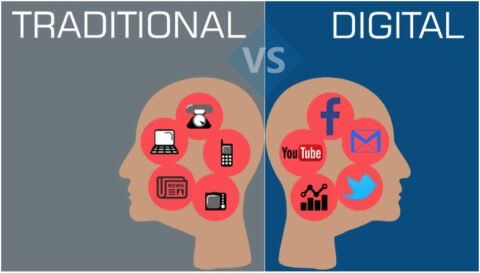Advertising is a key aspect of any business strategy. Whether it’s promoting a product, service, or brand, the goal is to reach target audiences and convert them into customers. With the rise of digital technology, businesses now have more options than ever before when it comes to advertising. In this article, we will explore the pros and cons of digital advertising compared to traditional advertising methods.
What is Digital Advertising?
Digital advertising refers to any form of advertising that is delivered through digital channels such as social media, search engines, websites, and mobile apps. This can include display ads, video ads, social media ads, and more. Digital advertising allows businesses to target specific demographics, track performance in real time, and adjust campaigns on the fly.
Pros of Digital Advertising
Targeted Advertising
One of the biggest advantages of digital advertising is the ability to target specific audiences based on demographics, interests, and behaviors. This allows businesses to reach the right people with the right message at the right time, increasing the likelihood of conversions.
Measurable Results
Digital advertising offers powerful analytics tools that allow businesses to track and measure the performance of their campaigns in real time. This data can be used to optimize campaigns, improve targeting, and maximize ROI.
Cost-Effective
Compared to traditional advertising methods such as TV, radio, and print, digital advertising is often more cost-effective. Businesses can set budgets, control spending, and target specific audiences, helping to maximize their advertising dollars.
Flexibility
With digital advertising, businesses have the flexibility to adjust campaigns on the fly. Whether it’s changing messaging, targeting different audiences, or testing new creatives, businesses can quickly pivot based on real-time data and feedback.
Cons of Digital Advertising
Ad Fraud
One of the biggest challenges with digital advertising is ad fraud. This includes fake clicks, impressions, and conversions generated by bots rather than real users. Ad fraud can lead to wasted ad spend and skewed performance data.
Ad Blocking
As more users install ad blockers on their devices, digital ads are becoming less effective. This can make it harder for businesses to reach their target audiences and can result in decreased ad revenue.
Saturation
With the rise of digital advertising, consumers are bombarded with ads on a daily basis. This can lead to ad fatigue and decreased engagement with ads, making it harder for businesses to stand out in a crowded marketplace.
What is Traditional Advertising?
Traditional advertising refers to any form of advertising that is delivered through offline channels such as TV, radio, print, and billboards. While digital advertising has become more popular in recent years, traditional advertising still plays a key role in many advertising strategies.
Pros of Traditional Advertising
Wide Reach
Traditional advertising methods such as TV and radio have the potential to reach a mass audience in a short amount of time. This can be beneficial for businesses looking to raise brand awareness and reach a broad audience.
Tangibility
Print ads, billboards, and other traditional advertising methods offer a tangible form of advertising that can stay in front of consumers for longer periods of time. This can help create brand recognition and recall among consumers.
Trust
Some consumers still trust traditional advertising more than digital advertising. This can be especially true for older demographics who are less familiar with digital technology and may be more receptive to traditional advertising methods.
Cons of Traditional Advertising
Lack of Targeting
Traditional advertising methods often lack the targeting capabilities of digital advertising. Businesses may not be able to reach specific demographics or track performance as effectively, leading to wasted ad spend and lower ROI.
High Cost
Advertising on TV, radio, and in print can be expensive, especially for businesses with limited budgets. This can make it difficult for smaller businesses to compete with larger competitors who have more resources for traditional advertising.
Limited Flexibility
Once a traditional ad is launched, it can be difficult to make changes or adjustments. Unlike digital advertising, businesses may not have the flexibility to optimize campaigns in real time or respond to changing market conditions.
Conclusion
When it comes to digital advertising vs. traditional advertising, there are pros and cons to consider for each method. Digital advertising offers targeted advertising, measurable results, cost-effectiveness, and flexibility, while traditional advertising offers wide reach, tangibility, and trust among consumers.
Ultimately, the best advertising strategy will depend on the goals, budget, and target audience of each business. Some businesses may benefit from a combination of digital and traditional advertising methods to reach a diverse audience and maximize their advertising ROI.
